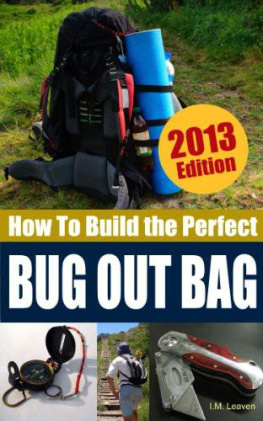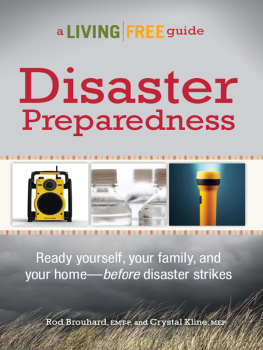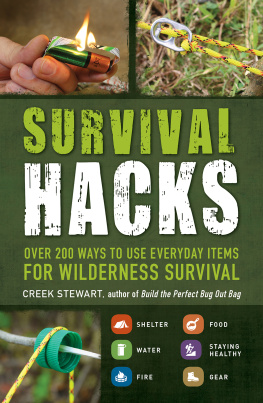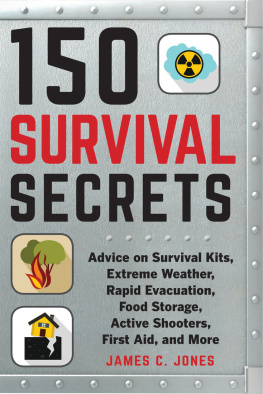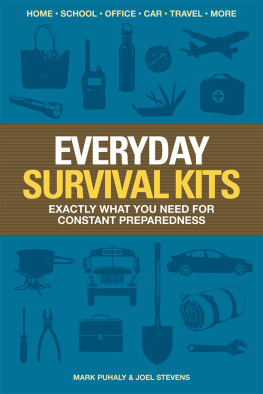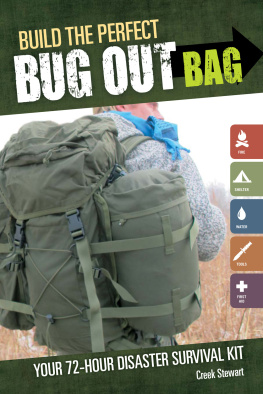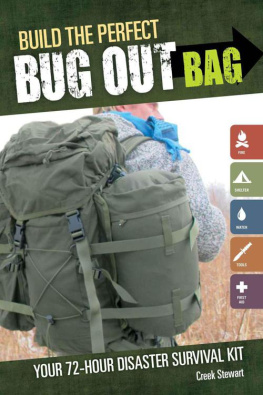How to Build a Bug Out Bag
By I.M. Leaven
Copyright 2013 CDI Publications, INC.

Table of Contents
What is a Bug Out Bag?
The term Bug Out Bag, can refer to a number of different things for a variety of individuals. The majority of people that take the time to assemble a carry-all item of this nature have a tendency to collect an abundance of items they feel will be necessary to secure their safety and survival should an apocalyptic or life-changing event occur.
What a person carries in their personal bug out bag will vary from one prepper to another. Some will pack the things they think are necessary in a simple and handy backpack, whereas others will border on the extreme and may have a tow behind trailer for a vehicle packed to capacity with various household items they think will be of use to them when they arrive at their aftermath destination.
There are several items that warrant serious consideration when you begin to develop a plan for building a bug out bag. That being said there are several items that can be eliminated from the equation since they will serve no purpose other than being additional bulk to the bag.
You need to focus on what the future might have in store for you should you wake up one morning to find that the landscape has undergone a drastic and irreparable change during the previous night. Some things will come in very handy and useful, others will serve a purpose from time to time and may be necessary or desired, and yet other items will hold sentimental value or monetary value, yet serve very little purpose for ensuring safety and survival.
With that in mind, your bug out bag needs to be something that can be carried or retrieved at a moments notice. If/when it becomes necessary to initiate your exit strategy, the last thing you want to be concerned with is locating the items you want to bring with you. This is an item that should be pre-packed and stored in a known location. Keep it in the hall closet, garage, or in the rear of the vehicle, depending on the lifestyle you lead. Make sure it is made out of tear-resistant material. These bags can be found at outdoor supply stores such as Gander Mountain, Outdoor World and Army Navy.
It is important to pay attention to the contents of the carry-all configuration you come up with. You want to keep this item manageable. Do not include items that are big, bulky or unnecessary. This pertains primarily to those new to prepping. If you are trying to get your wife or spouse on board and they are reluctant to leave behind things that are truly unnecessary, consider taking them on an extended camping trip only bringing your bug out bags. Let them pack what they feel is important in theirs and after 1-2 weeks, see if his/her view on the bare necessities does not change.
Use common sense when developing a plan for what to pack in your bug out bag. Make a list of the things you want to bring along, things you need to bring along, as well as a list of optional items of a sentimental value. Once you have these lists you will need to refine them, narrow down your options and make wise selections for inclusion. Having a few items from each list in the bag will make the sudden and drastic transition easier to accommodate. Sentimental items may not have much use in the apocalyptic aftermath environment but they can make the new digs feel a little more like home and instill a modicum of normalcy to an unsure situation.
Breaking Down the Bag
If you are new to the survivalist scenario, then you probably have no idea what items might require serious consideration and which objects should be left behind. The rule of thumb is to focus on portability at all times. Your contents need to be lightweight and compact. You may be forced to run in order to escape a bad situation so you dont want your bag to weigh you down unnecessarily. Your bug out bag is the last item you should need to bring with you in the event you are forced to relocate to a bunkered location. This carry-all unit should include the items you might need to have at your immediate disposal while you are making your way from the current location to your bug out destination. In the event you have not established an area to continue your existence in a post-apocalyptic environment you should probably get on board with that aspect of the survivalist scenario before building a bug out bag as it may change your contents slightly due to terrain and weather conditions.
If the basis of your bug out blueprint involves trying to pack and load food, kitchen utensils, bathroom items and personal toiletries as soon as the fecal matter hits the fan, then chances are you will never reach your desired destination. In an disaster, massive societal confusion is going to set in immediately. People are not going to sit in their homes and gather their belongings calmly while waiting for the dust to settle before they bug out for the after catastrophe camp.
Your Retreat
Before you even consider what contents to carry in your bug out bag, you should have a retreat location, survival bunker or complex in place. This area should already have supplies stocked for enhancing your survival. If the location is not a pre-built/pre-stocked shelter, then make sure that it has the means to deliver your longer term survival needs such as running water(stream or well), construction materials, hunting/fishing, possible gardening options and the most important provide a vantage point to defend against attackers while not easily being recognized as having a survival cache.
It may not have the same creature comforts as home, but it should have some form of chairs for seating as well as cots, sleeping bags, blankets and pillows for sleeping. A set of pots, pans and kitchen utensils should also be in place. Commonly shared bathroom items, such as toilet paper, shampoo, towels and toothpaste should also be in place and present prior to your arrival. In addition the survival site should have an ample supply of non-perishable food in stock and potable drinking water.
Some of you are probably wondering what should be left behind and not included in the bug out bag. Think of your carry-all as a care package that should sustain you for a period of at least 7-10 days while giving you a few valuable tools that could help you if an extended period becomes necessary. In most post-disaster scenarios it is theorized that driving from one location to a hillside bunker is going to be near impossible, especially for citizens in major cities and suburban sprawls. Traffic congestion alone will prevent many people from even escaping the city limits except on foot, by bike, or on horseback. The 20 mile trip that used to take half an hour on a bad day to reach by vehicle might take several days to get to depending on where you live and what mode of transportation you have available to you. Not only will traffic congestion cause problems but there may also be pockets of population along the way that you will want to skirt around rather than pass through.
These will be troubling times for those that make it past the devastating event, especially for the unprepared. You will want to avoid making contact with anyone as it may result in aggressive behavior or at the very least entice others to follow you. Make no mistake about it, a post-collapse planet, is not going to be the scenario to perfect your hospitality traits in. You will only have enough supplies in your bag for you and your family, and adding additional mouths to feed will deplete your resources in short order. This will be a real survival of the fittest moment, not a survival of the friendliest atmosphere.
Food and Water
Your bug out bag needs to carry enough non-perishable food to make the journey from one junction to another. It needs to have bottled water for everyone in the traveling caravan. Do not assume that you will be able to locate these items along the way. The unprepared survivors are going to ransack every convenience store and super market they come across for these types of items. A great additional item to include in your bug out bag is a LifeStraw. This individual portable water filter can filter up to 1000 gallons of drinkable water and is compact and light. You can find one by following this link http://www.vestergaard-frandsen.com/lifestraw . This could make carrying water easier since you won't need to carry a weeks worth, but you will need to know where to filter and refill your canteen along the way.
Next page
